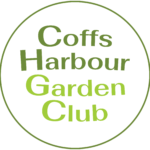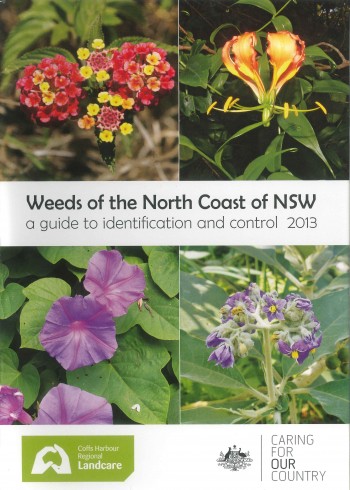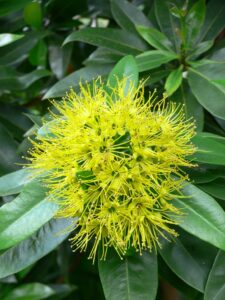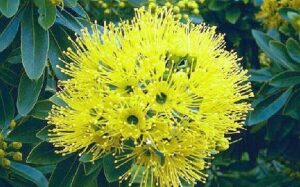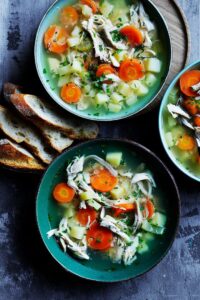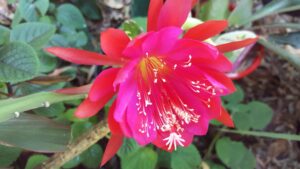For further information about weeds of the North Coast please refer to this booklet – Link for the above publication.
The real cost of weeds to the Australian environment is quite difficult to calculate, however if the agricultural industry spends around $4 billion a year combating the spread of weeds, a very conservative estimate would be to at least match that figure.
Of all environmental weeds 65% are escaped garden plants. Garden escapes are not a new issue, weeds have been around since the first settlers brought along reminders of their homeland to help them settle into their new strange land, growing trusted and familiar plants. The Australian landscape must have seemed very inhospitable and to grow something from ‘home’ would have been very comforting.
Since 1778 there have been many introduced things going totally haywire, take the rabbit for instance, which has been an environmental pest of huge proportions. So damage to our environment is not just limited to the horticultural sphere.
The Nursery & Garden Industry are actively limiting the availability of invasive plants by preventing their production and sale. Greater awareness and education of the home gardener has to addressed too. The CHGC has been proactive in introducing guest speakers who have been very informative about local weeds and how we, as gardeners can do our bit to prevent these ‘escapees’ from doing even more damage to the environment; posts and articles on our website and facebook and general discussion at meetings.
An ‘environmentally invasive plant’ is just another term for a weed – a weed is any plant that poses a threat to the environment, adversely impacts human and animal health or causes crop losses. For most gardeners, many of the characteristics we desire most in garden plants are the same as those that make them weedy, plants that are fast growing, disease resistant and reproduce easily!
Invasive plants are defined and categorised as follows:
Noxious weeds: are plants declared by Sate or Territory Governments. In general terms most state legislation will say that declared noxious plants cannot be grown, sold or transported or transposed and removal is mandatory.
Weeds of National Significance: are some of the most significant weeds in Australia and have all been declared illegal for sale in each state of Australia.
Environmental weeds: plants that are or have the potential to impact the natural environment by destroying habitat or over-running indigenous species and altering local biodiversity, many of the worst environmental weeds are garden escapees.
Agricultural & Horticultural weeds: plants that have a negative effect on crop or animal production.
See below some environmental weeds with listed alternatives to grow. (All images Sheldon Navie.)
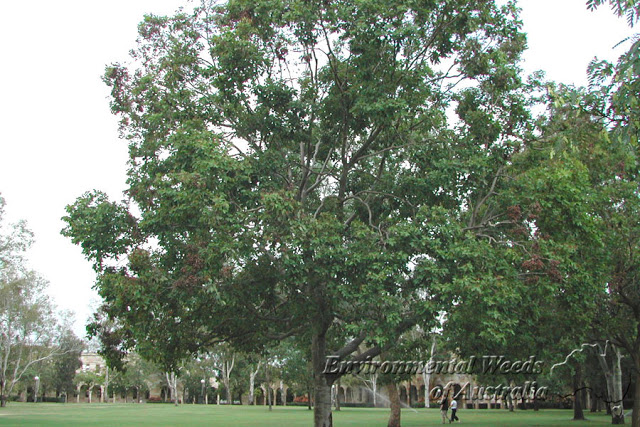
Cadaghi Gum Corymbia torelliana (formerly Eucalyptus toelliana)
Grow instead:
Morton Bay Ash Corymbia tessellaris
Queensland Maple Flindersia brayleyana
Brush Box Lophostemon confertusLorem ipsum dolor sit amet, consectetur adipiscing elit. Ut elit tellus, luctus nec ullamcorper mattis, pulvinar dapibus leo.
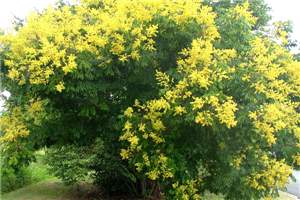
Golden Rain Tree Koelreuteria elegans subsp. formosana Koelreuteria paniculata
Grow instead:
Leichhardt Bean Cassia brewsteri
Golden Penda Xanthostemon chrysanthus
Ivory Curl Tree Buckinghamia celsissima
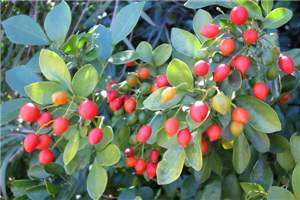
Mock Orange Murraya paniculata (seeding grown form)
Grow instead:
Mock Orange Murraya paniculata (cutting grown form)
Lilli Pillys Syzygium australe cultivars
Gardenia jasminoides ‘Florida’
Lemon Scented Myrtle Backhousia citriodora
Sasanqua Camellia Camellia sasanqua
Native Mock Orange Murraya ovatifoliolata
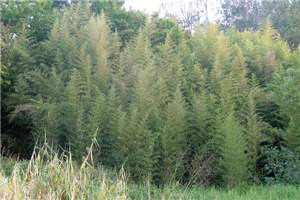
Golden Bamboo Phyllostachys aurea and Black Bamboo Phyllostachys nigra
Slender Weavers Bamboo Bambusa textilis var. gracilis
Tiger Grass Thysanolaena latifolia Syn. Thysanolaena maxima
Eumundi Quandong Elaeocarpus eumundi
Timor Black Bamboo Bambusa lako
Slender Palm Lily Cordyline stricta
Chungi Bamboo Bambusa chungii
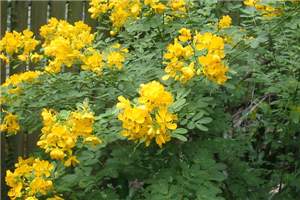
Easter Cassia Senna pendula var. glabrata
Grow instead:
Dwarf fringed wattle Acacia fimbriata ‘Nana’
Bacon & Eggs or Hairy pea bush Pultenaea villosa
Dogwood Jacksonia scoparia
Grevillea ‘Honey Gem’
Native Hop Bush Dodonaea triquetra
Purple Pea Bush Hovea acutifolia
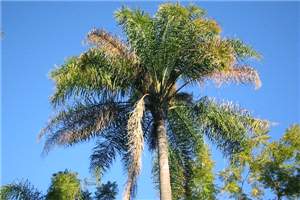
Cocos Palm Syagrus romanzoffiana
Grow instead:
Bangalow Palm Archontophoenix cunninghamiana
Foxtail Palm Wodyetia bifurcata
Ribbon Fan Palm Livistona decipiens
Cuban Royal Palm Roystonea regia
Cabbage Tree Palm Livistona australis
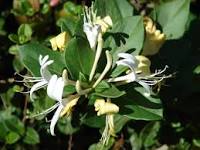
Japanese Honeysuckle Lonicera japonica
Grow instead:
Star Jasmine Trachelospermum jasminoides
Bower of Beauty Pandorea jasminoides
Wonga Wonga Vine Pandorea pandorana
Snake Vine Hibbertia scandens
Fraser Island Creeper Tecomanthe hillii
‘Roaring Meg’ Tecomanthe species
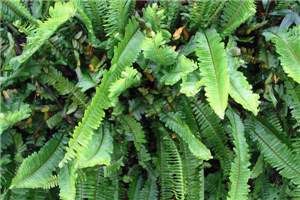
Fishbone Fern Nephrolepis cordifolia
Grow instead:
Rasp Fern Doodia aspera
Gristle Fern Blechnum cartilagineum
Rough Maidenhair Fern Adiantum hispidulum
Bird’s Nest Fern Asplenium australasicum
Leather Fern Rumohra adiantiformis
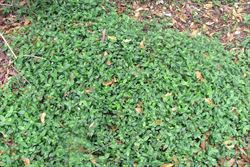
Wandering Jew – Trad Tradescantia fluminensis
Grow instead:
Native Violet Viola hederacea
Variegated Star Jasmine Trachelospermum jasminoides ‘Tricolor’
Native Sarsaparillas Hardenbergia violacea cultivars
Grape Ivy Cissus rhombifolia
Creeping Boobialla Myoporum parvifolium
Coastal Boobialla Byoporum boninense subsp. australe
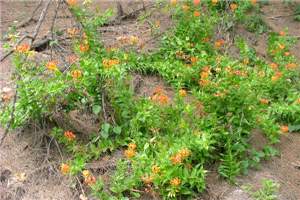
Glory Lily Gloriosa superba
Grow instead:
Bower of Beauty Pandorea jasminoides
Snake Vine Hibbertia scandens
Native Sarsaparillas Hardenbergia violacea cultivars
Richmond Birdwing Vine Pararistolochia praevenosa
Blue Flax Lily Dianella congesta
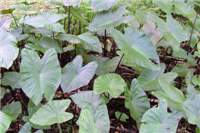
Purple Stemmed Taro Colocasia esculenta
Grow instead:
Cunjevoi Alocasia brisbanesis
Swamp lily Crinum pedunculatum
Native Ginger Alpinia caerulea
Variegated Shell Ginger Alpinia zerumbet ‘Variegata’
Philodendron ‘Xanadu’
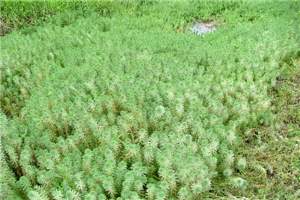
Parrot Feather Myriophyllum aquaticum
Grow instead:
Water Milfoil Myriophyllum papillosum
Upright Water Milfoil Myriophyllum crispatum
Banded Nardoo Marsilea mutica
Hybrid Water Lilies Nymphaea
Sea Rush Juncus kraussii
